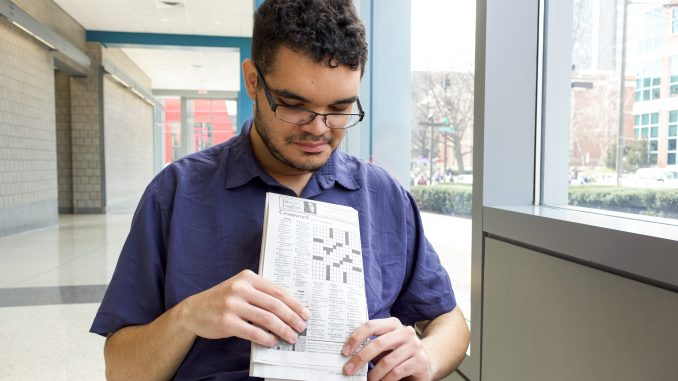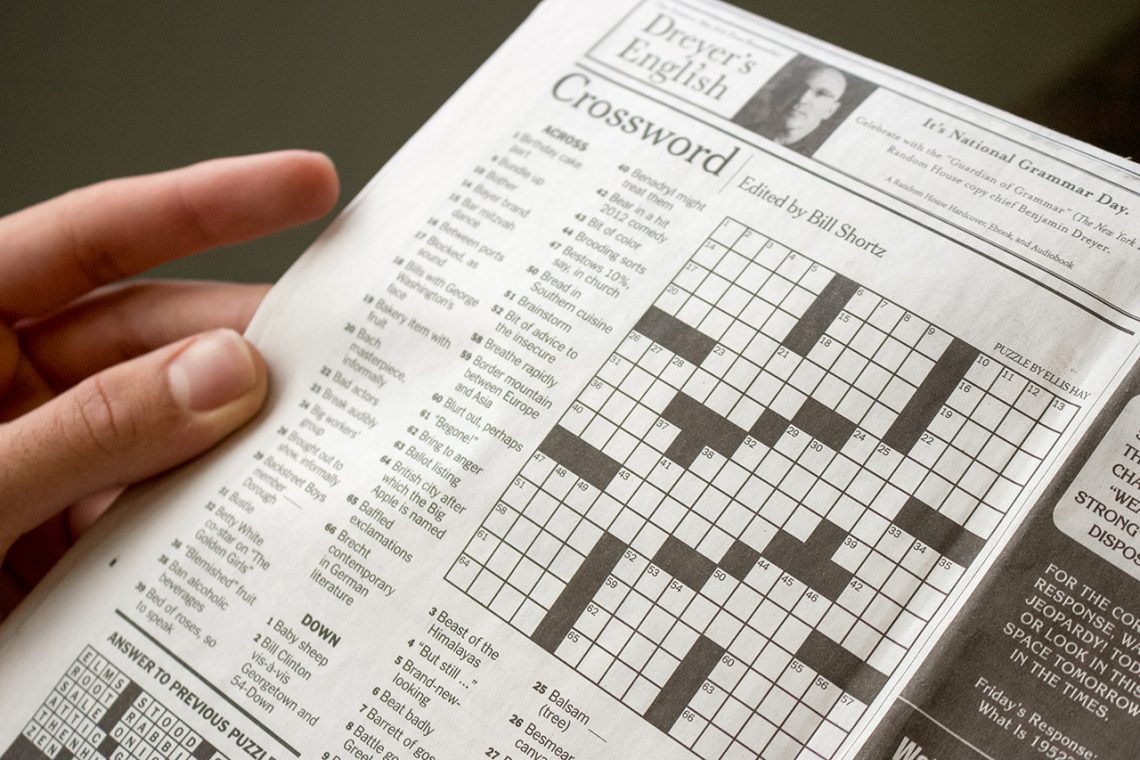
Having pieced together six crosswords last school year, Ellis Hay always felt he was more of a puzzle creator than a puzzle solver.
The love for puzzles runs in his family. His grandfather used to constantly solve crosswords while Hay grew up playing Scrabble and doing puzzles with his parents.
“I’ve just always been interested in playing Scrabble and thinking about words and how they go together, so I guess crosswords interested me in that way,” said Hay, a junior music composition major.
Hay made his debut as a crossword puzzle maker in The New York Times this month. His puzzle’s theme focused on the sounds of the letter “B” and was published in print and online on March 4.
“I was just trying to design a puzzle that I myself would like to solve,” Hay said.
Crossword puzzles are centered around a specific theme. Theme words, or longer, theme-related words, are the initial clues the puzzle designer makes that the other answers are based on. Hay’s crossword had four theme words based on different spellings of “B” sounds: B Minor Mass, Bea Arthur, bee stings and be yourself.
Hay was inspired to make this theme after discovering through a web search that Arthur, a “Golden Girls” star, was the only “Bea” well known enough to be a crossword puzzle answer.
Hay submitted a few puzzles to the New York Times before his 15-by-15, 76-clue crossword was selected in July 2018.
He received an email on Feb. 26 informing him it would be published this month.
“It was one of those things I had kind of thought about from time to time but hadn’t been on my mind,” Hay said. “I called my mom because I knew she was going to be real excited about it, and she kind of told everyone about it.”
Hay began creating puzzles in 2014. He typically spends a few weeks making each one through the puzzle-building software Crossword Compiler. He began making them to challenge himself to fill in the grid space, he said, and became more experienced with crossword construction after learning more about puzzling online.

Will Shortz, the crossword editor of The New York Times, said he receives 75-100 submissions per week, and one major thing he considers in the selection process is the puzzle’s word choice.
“We look for the quality of the vocabulary,” he said. “Is it lively, fresh, interesting answers that people will know? This one does.”
Two of Hay’s puzzle answers, “IS THAT OK” and “GINSBURG,” had never appeared in The New York Times crosswords since they began in 1942, Shortz said.
Starting all clues with the letter “B,” in addition to the “B” sound theme, are extremely rare puzzle constructions, Shortz added.
“The ingenuity of starting every clue with the letter ‘B’ to carry through in the theme; it’s just a very elegantly made puzzle,” Shortz said.
Shortz included his own B-themed flair to the paper by publishing his name as “Bill Shortz,” which he said stemmed from a joke with his assistant.
The New York Times crossword puzzles typically increase in difficulty throughout the week, with Monday’s being the easiest and Thursday’s being the hardest.
Hay’s dad, John Hay, said he found his son’s puzzle difficult to solve, despite being a Monday puzzle.
“I’m really proud that he figured out the process, to get it in the hands of Will Shortz, the puzzle master,” John Hay said.
He also said it was the first of his son’s puzzles he ever worked on.
“Until you actually see it, like you’re holding The New York Times, and you see it in print in front of your face, that’s when it really you hits you and you’re like, ‘Wow, this is really something,” John Hay said.
Ellis Hay plans to continue making puzzles in his free time and submit future crosswords to The New York Times. Since his first byline, he’s come to appreciate how it feels to have a finished, published product.
“It feels nice to look back at it and think [of] all the time that I put into it, and now people are solving it and writing about it,” Ellis Hay said. “It feels nice to put time and effort into something and have it come out nicely.”


Be the first to comment